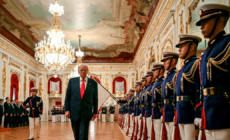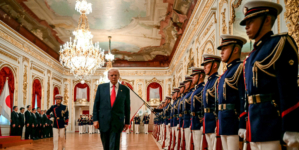-
Months after fire in Altadena, determination turns to despair - 11 mins ago
-
WWE Reportedly Interested in Top AEW Stars - 14 mins ago
-
Dad’s 911 call leads to grisly discovery in car trunk: ‘I killed my children’ - 22 mins ago
-
Clayton Kershaw Bids Farewell to Dodger Stadium After Game 5 of the World Series - 23 mins ago
-
Kelsea Ballerini discusses mental health after Chase Stokes split - 26 mins ago
-
Janaf Withholds 90,000 Tons of Crude amid Dispute with MOL - 36 mins ago
-
Contributor: California was an ‘earthly paradise’ for Jews. Is it still? - 51 mins ago
-
3 Dogs Left Alone in Living Room—Owner Films What She Comes Home To - 53 mins ago
-
Trump is feted by Asian allies he has shaken to the core - about 1 hour ago
-
Sharon Stone defends Sydney Sweeney’s right to be hot amid controversy - about 1 hour ago
King Tut’s treasures haven’t been all together in more than a century. Until now.
GIZA, Egypt — They’re the crown jewels of the Grand Egyptian Museum — two galleries devoted to the ancient pharaoh Tutankhamun.
Showcasing more than 5,300 objects from the boy king’s tomb, including his iconic gold death mask and glittering royal regalia, most of which have never been seen by the public, the galleries are expected to draw millions of visitors every year to the museum here on the outskirts of Cairo, which will hold its grand opening ceremony on Saturday.
Details about the event are a closely guarded secret, but on a behind-the-scenes visit to the museum’s Conservation Center earlier this month, General Director Hussein Kamal told NBC News that it would be the first time since Tutankhamun‘s tomb was discovered in 1922 that all the items had been stored in one place.
“It’s wonderful,” he said, adding that he was most excited by the display featuring King Tut’s armor. The piece made from textiles and leather was “unique throughout ancient Egyptian civilization,” he said.
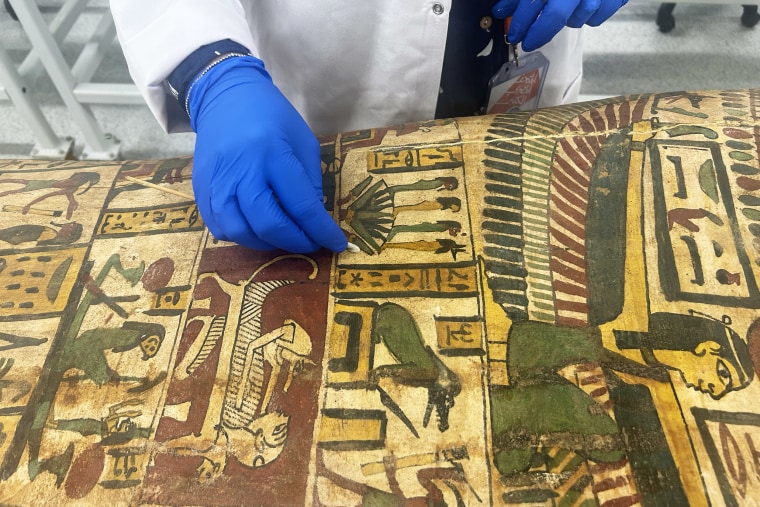
Kamal said the items, previously held in a storeroom, were painstakingly restored by some of the Conservation Center’s 150 conservators who have been working on the pharaoh’s artifacts since 2017.
“We tried to reshape it from the original,” he said, adding that it had been a challenge because they did not have anything to compare it to and had to depend on “investigation and analysis to know the original structure of the armor.”
Believed to have become pharaoh when he was 8 or 9 years old, in around 1334 B.C., Tutankhamun ruled until his death 10 years later, and is believed to have suffered from numerous illnesses and disabilities, including circulatory problems, malaria, bone disease and a club foot.
His tomb was discovered in November 1922 in the Valley of the Kings by the British archaeologist Howard Carter, undisturbed by grave robbers and almost completely intact, nearly 400 miles south of Egypt’s most famous archeological treasures in Giza.
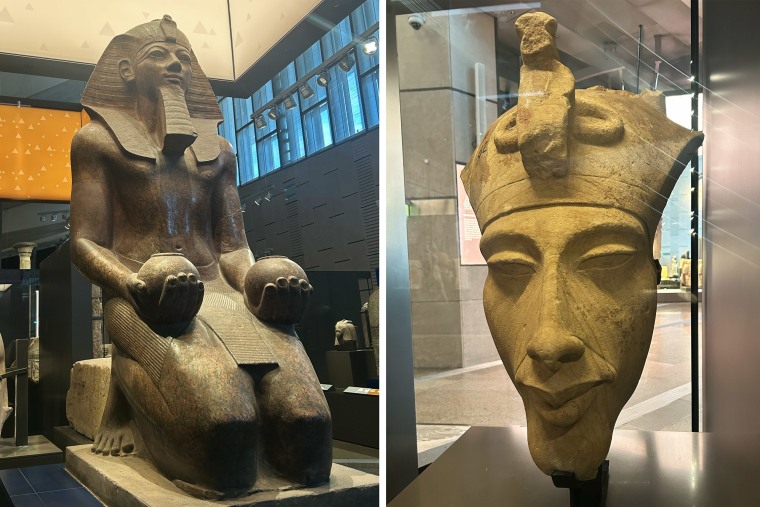
Now the artifacts recovered from that tomb will sit in the largest museum in the world dedicated to a single civilization, its grounds covering 117 acres, or the equivalent of 80 football fields, just over a mile north of the Great Pyramids of Giza outside Cairo.
The collection also includes the 4,000-year-old funerary boat, also known as the Cheops ship, of Pharaoh Khufu.
While the museum will officially open Tuesday, limited tours have been available since 2023, and the public was allowed access to most of its main galleries last October.
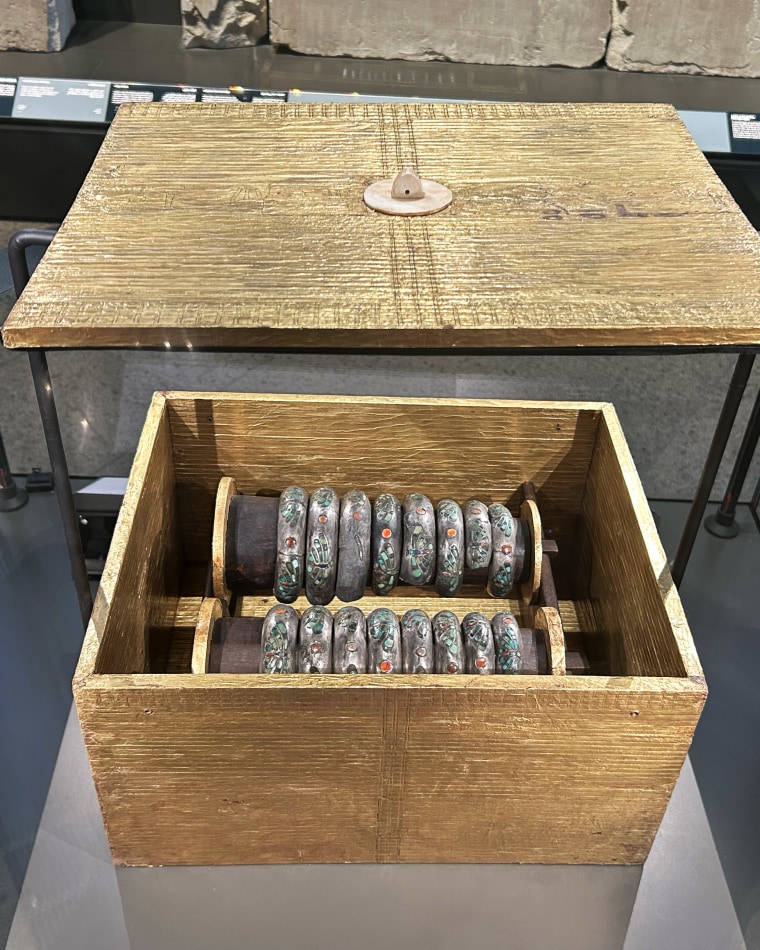
Alongside the Tutankhamun exhibition, the museum holds artifacts from the prehistoric era, dating from 700,000 B.C., to the Roman era of the fourth century A.D., arranged around themes of kingship, society and beliefs.
Statues, sarcophagi and stelae also give a view into the life of Egypt’s ancient elite and how they prepared themselves for what came after.
At the museum’s center sits the six-story Grand Staircase with a view of the pyramids and an atrium containing monuments, pharaonic statues and sarcophagi.
The opening ceremony will celebrate a project announced in 1992. Construction officially began in 2005 and has been hit by repeated delays due to the Arab Spring and the Covid-19 pandemic.
Ahmed Ezz, the chairman of Ezz Steel, which provided all of the steel rebar needed for the project, said in an interview this week that it not only reflected his country’s past but was “also part of an architectural renaissance of Egypt.”
After a “difficult decade,” he added that he hoped the museum would show that his country was “going on a more positive trajectory.”
Source link








